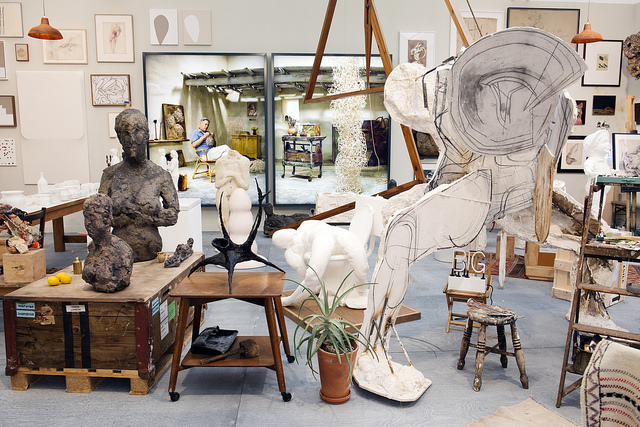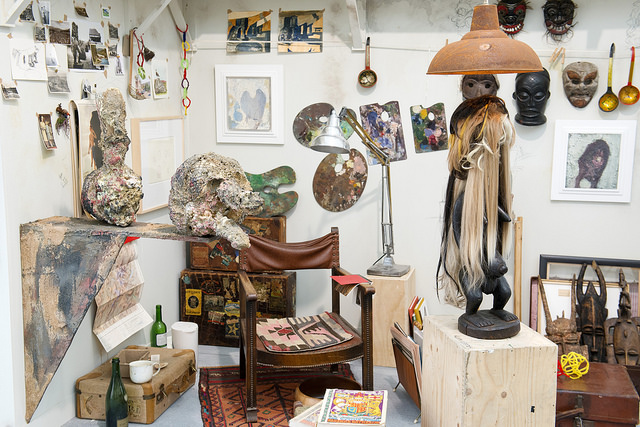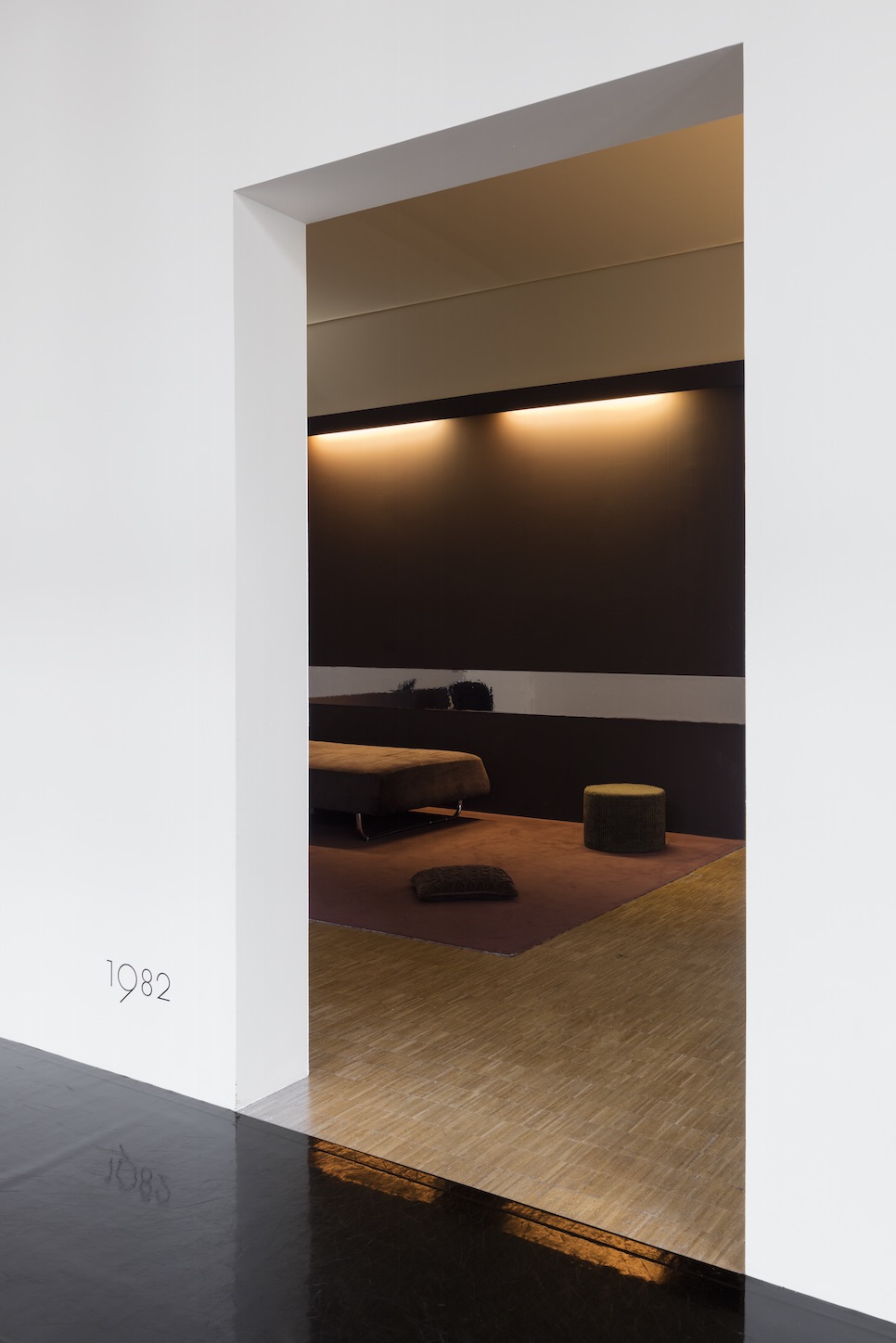An array of pillows, house plants and lazily discarded shirts are placed in a welcoming fashion in many galleries’ booths at this year’s Frieze. But don’t get too comfortable, there’s more going on beneath the surface.
Heading through the beaded doorway at Hauser & Wirth, one feels immediately at ease, as if snooping around a friend’s studio space whilst they fetch you both a hot beverage. Personal touches abound in this life-sized studio; discarded clothes are draped over hooks and coffee-stained newspapers lay next to used paintbrushes. One feels a close affinity with the artist through their mutual appreciation of Dunlop calendars, aztec rugs and aloe vera plants. But look a little closer, and you will be reminded that this is not the relaxed studio of a single artist, but the display for a number of different artists’ works. Hidden amongst the every day objects, you’ll find a cardboard sculpture by Pipilotti Rist, Seit, and a beautifully intricate brass sculpture by Fausto Melotti, alongside Philip Guston’s Tower. Surface aesthetics and contexts are toyed with playfully, encouraging one to look closer, finding oneself questioning reconstructions, how a gallery stages art, and what that means for the works themselves.
Over at Esther Schipper’s The Nineties booth, visitors enter through a heavy curtain into a dusky bedroom. A single maroon pillow sits pointedly next to a velvet footstool and a soft velvet mattress in Dominique Gonzalez-Foerster’s R.W.F (Rainer Werner Fassbiner) (1993), in this triumphant replay of her autobiographical rooms. The room is invitingly calm compared to the stark whiteness outside, so much so that one spectator gravitates towards the maroon carpet, asking whilst striding: “We are supposed to sit on the bed, aren’t we?”. He stalled rather abruptly when the assistant replied matter of factly: “No, the bed is just for looking at”.
At Marianne Boesky, dwells Hans Op de Beeck’s The Silent Library, where a pleasingly calm library stage is set. Ceiling to floor, objects are set in chalky white plaster. The scene is charmingly characterless, yet still quietly inviting. The sense of stillness upon entering begins to ebb away as the disorientating effects of the room’s uniform whiteness of the plastering begins to take hold. Grapes, bananas, house plants and an ashtray filled with cigarette butts; all seem trapped in a clinically static condition. This sensation is indicative of the disconnecting intersection of the familiar and the uncanny so prevalent at this year’s Frieze.
Frieze London runs until 9 October at Regent’s Park, London





Marianne Boesky, Frieze London 2016 Photograph by Linda Nylind. Courtesy of Linda Nylind/Frieze.





